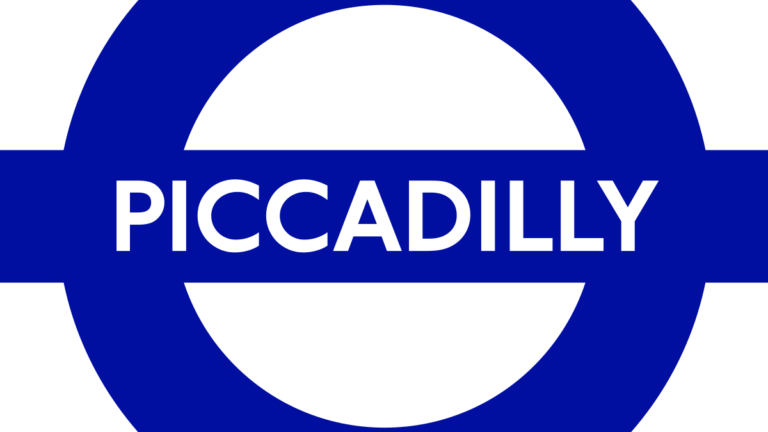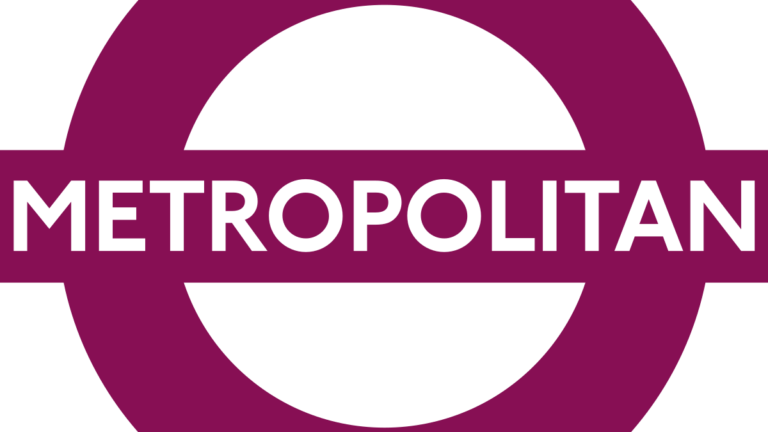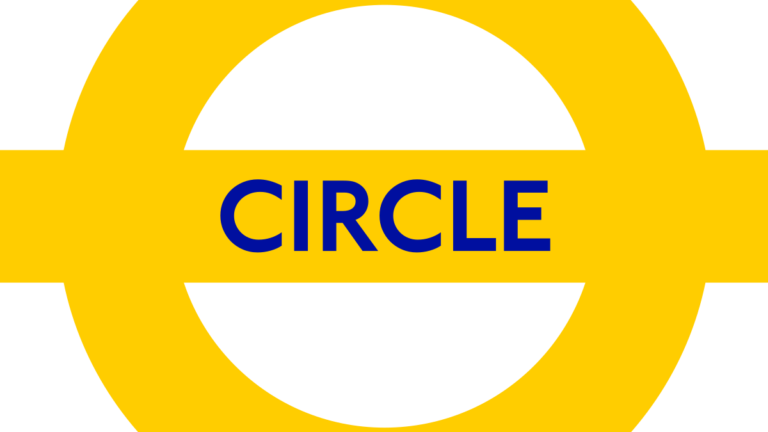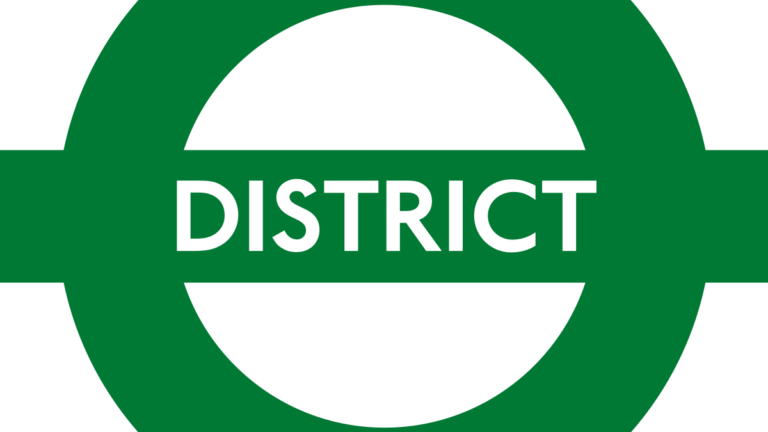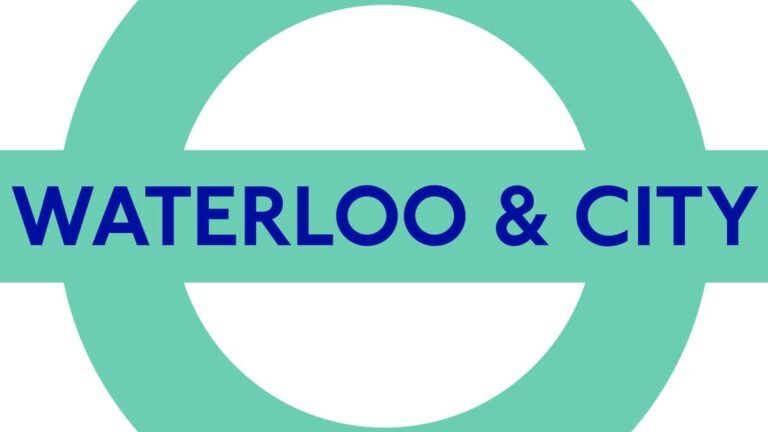The Hammersmith & City Line is a vital part of London’s Underground network, serving millions of passengers each year. Whether you’re a daily commuter, a tourist, or just curious about London’s transport system, this comprehensive guide covers everything you need to know—from the Hammersmith and City Line timetable to its stations, route map, operating hours, and fascinating facts.
By the end of this guide, you’ll have a complete understanding of this iconic Tube line, ensuring smoother and more efficient travel across London.
Hammersmith and city line map

Route Goldhawk Road – Barking
Hammersmith and city line map
1. Overview of the Hammersmith & City Line (Hammersmith and city line map)
The Hammersmith & City Line is not just another Tube line—it’s a living piece of transport history and a vital east-west artery for London. Recognizable by its distinctive salmon-pink color on the Tube map, this line blends Victorian heritage with modern commuting.
🚇 Historical Significance
- Opened in 1863 as part of the world’s first underground railway (the Metropolitan Railway).
- Original Purpose: To connect Paddington (Great Western Railway) with Farringdon (linking to the City).
- Fun Fact: The first trains were steam-powered, with gas-lit wooden carriages (soot and fog included!).
📍 Route Essentials
| Feature | Details |
| Termini | Hammersmith (West) ↔ Barking (East) |
| Length | 25.5 km (15.8 miles) |
| Stations | 29 (All step-free at platform level) |
| Daily Ridership | ~500,000 passengers (pre-pandemic) |
| Operated By | Transport for London (TfL) |
🔗 Key Connections
The line’s real power lies in its seamless interchanges:
✔ At Paddington: Elizabeth Line (Heathrow) & National Rail
✔ At King’s Cross: Eurostar, Thameslink, and 6 Tube lines
✔ At Liverpool Street: Elizabeth Line, Central Line & Overground
✔ At Whitechapel: Overground (24-hour service to Shoreditch)
🌟 Unique Station:
- Farringdon is the only station served by all four sub-surface lines (Circle, H&C, Metropolitan, Thameslink).
🚆 Modern Operations
- Trains: S7 Stock (air-conditioned, walk-through carriages)
- Frequency: Every 2-5 mins peak, 8-10 mins off-peak
- Speed: Average 30 km/h (slower than deep tubes due to shared tracks)
🌍 Why It Matters Today
- Commuter Essential: Serves 3 major business districts (City, Canary Wharf via connections, Paddington).
- Tourist Helper: Direct access to:
-
- Stadiums: Emirates (Arsenal) via Drayton Park
- Markets: Portobello Road (Ladbroke Grove)
- Landmarks: St. Paul’s (via Barbican)
💡 Did You Know?
The pink color was chosen in 1990 to distinguish it from the red Metropolitan Line—they originally shared tracks!
Next time you ride: Look for original 1860s brickwork at Farringdon and heritage platform tiles at Baker Street.
2. Hammersmith & City Line Timetable: When Do Trains Run?
Planning your journey? Here’s everything you need to know about the Hammersmith & City Line timetable.
Peak Hours (Weekdays: 7:00 AM – 9:30 AM & 4:30 PM – 7:00 PM)
- Frequency: Trains every 3-5 minutes
- First train: Around 5:00 AM (varies by station)
- Last train: Around 12:30 AM
Off-Peak & Weekends
- Frequency: Every 6-10 minutes
- Early morning (before 7 AM): Reduced service
- Late-night service (after 11 PM): Less frequent, check TfL for exact times
Weekend & Engineering Works
- Some sections may close for maintenance (common on Sundays)
- Replacement buses are provided when stations are closed
Pro Tip: Always check TfL’s official website or app for real-time updates before traveling.
3. Hammersmith & City Line Map: Route and Key Stations

The Hammersmith & City Line map shows its pink route stretching across London. Below is a breakdown of its key stations and interchanges. Hammersmith and city line map
Full List of Stations (West to East)
- Hammersmith line map(H&C Line terminus) – Connects to District & Piccadilly Lines
- Goldhawk Road
- Shepherd’s Bush Market – Near Westfield Shopping Centre
- Wood Lane – Close to BBC Television Centre
- Latimer Road
- Ladbroke Grove – Near Portobello Road Market
- Westbourne Park
- Royal Oak
- Paddington – Major interchange for National Rail, Elizabeth Line, and other Tube lines
- Edgware Road (Circle Line)
- Baker Street – Access to Madame Tussauds & Regent’s Park
- Great Portland Street
- Euston Square – Near Euston Station (National Rail)
- King’s Cross St. Pancras – Major hub for Eurostar, Thameslink, and 6 Tube lines
- Farringdon – Future Elizabeth Line crossrail connection
- Barbican
- Moorgate – Financial district link
- Liverpool Street – Connects to Central, Circle, Metropolitan, and Overground lines
- Aldgate East
- Whitechapel – Interchange with Overground and future Elizabeth Line
- Stepney Green
- Mile End – Connects to Central Line
- Bow Road
- Bromley-by-Bow
- West Ham – Links to Jubilee Line and DLR
- Plaistow
- Upton Park
- East Ham
- Barking (Terminus) – Connects to c2c National Rail services
Interactive Tube Map
For a detailed Hammersmith & City Line map, visit TfL’s official Tube map.
4. Operating Hours of the Hammersmith & City Line
Wondering if the Hammersmith & City Line runs at night? Here’s what you need to know for stress-free travel.
🚇 Standard Operating Hours
| Day | First Train | Last Train | Notes |
| Monday-Saturday | 5:00 AM | 12:30 AM | Last departures from central stations (e.g., King’s Cross) ~12:15 AM |
| Sunday | 6:00 AM | 11:30 PM | Reduced frequency (every 10-15 mins) |
⚠️ Critical Times:
- Early flights? First trains reach Paddington by 5:20 AM (for Heathrow connections).
- Late nights? Last trains from Hammersmith depart 12:10 AM (check displays for exact times).
🌙 Does It Have Night Tube?
❌ No 24-hour service (unlike Jubilee/Northern lines).
🔄 Night Alternatives:
| Option | Details | Best For |
| Night Overground | Whitechapel (connects to 24-hour East London line) | Shoreditch nightlife |
| Night Buses | N15 (Paddington-Whitechapel), N205 (Paddington-Hammersmith) | Cheap, slow |
| Taxis/Rideshare | Uber/Bolt available 24/7 at major stations | Groups/late safety |
🔍 Pro Tip: Use TfL’s Journey Planner (tfl.gov.uk) for real-time last train updates.
🎯 TL;DR: Hammersmith & City Hours Cheat Sheet
| When? | Action |
| Weekdays | Last trains ~12:15 AM from central London |
| Sundays | Service ends early (plan ahead) |
| After Midnight | Use Night Bus N15 or Overground |
5. Interesting Facts About the Hammersmith & City Line
This historic line has some fascinating trivia you might not know!
1. One of the World’s Oldest Underground Lines
- Opened in 1863 as the Metropolitan Railway, the world’s first underground passenger railway.
- First Route: Paddington to Farringdon (originally called “Farringdon Street”).
- Steam-Powered Beginnings: Early trains burned coal, filling tunnels with smoke (passengers were given vinegar-soaked cloths to breathe through!).
2. Shared Tracks with Other Lines
The Hammersmith & City Line doesn’t own its tracks—it shares with:
✔ Circle Line (Edgware Road → Aldgate)
✔ District Line (Hammersmith → Aldgate East)
✔ Metropolitan Line (Baker Street → Aldgate)
- Why? All four lines evolved from the same 19th-century network.
3. Unique Rolling Stock
✔ S7 Stock Trains (since 2012):
- Air-conditioned (unlike deep-level Tube lines).
- Walk-through carriages (no doors between sections).
- Same fleet as Circle/District Lines (painted pink for H&C).
4. Ghost Stations
✔ British Museum Station (closed 1933):
- Located between Holborn and Tottenham Court Road.
- Still visible from passing trains (bricked-up platforms).
- Closed due to low ridership after Central Line expansion.
5. Future Upgrades
✔ Farringdon & Whitechapel will become super-hubs in 2024:
- Elizabeth Line integration (faster Heathrow/Gatwick links).
- New pedestrian tunnels to reduce congestion.
✔ New Trains by 2030? TfL plans to replace S7 stock with battery-powered models.
💡 Bonus Facts:
- The line’s salmon-pink color was chosen in 1990 to distinguish it from the red Metropolitan Line.
- Shortest distance between stations: Aldgate East → Whitechapel (0.25 miles).
- Only line to serve all of London’s historic financial districts (City, Canary Wharf via DLR, Paddington).
Next time you ride: Imagine steam engines puffing through the same tunnels 160 years ago!
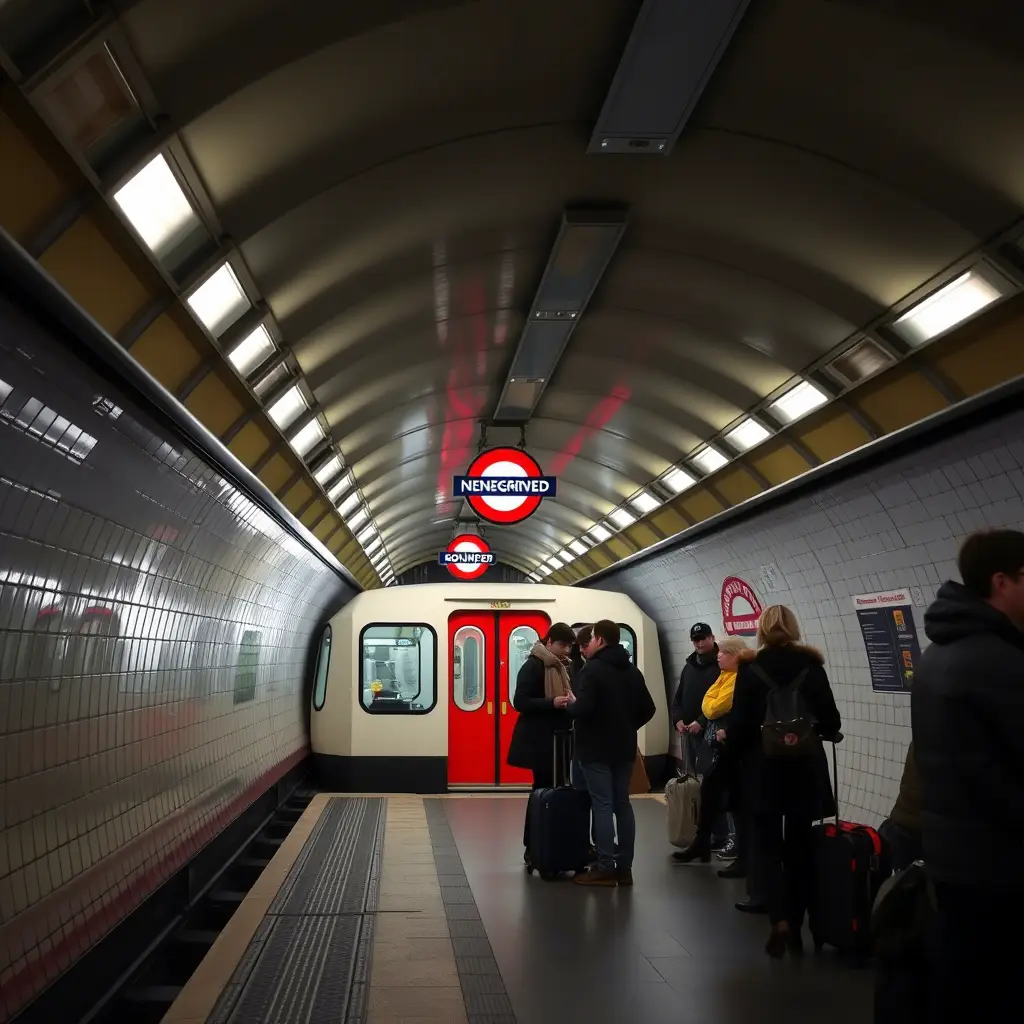
6. Tips for Traveling on the Hammersmith & City Line
To make your journey smoother, follow these pro tips for stress-free travel on London’s salmon-pink line:
🚇 Peak Hour Survival Guide
✅ Avoid 7-9:30 AM & 4:30-7 PM
- Hotspots to skip:
- Liverpool Street (financial district rush)
- King’s Cross St. Pancras (worst crowds 8-9 AM)
- Quieter Alternatives:
- Early birds: Trains before 7 AM are near-empty
- Late option: After 7:30 PM, seats usually available
💳 Smart Payment Tricks
✅ Contactless is King
- Oyster/Bank cards: Always cheaper than paper tickets
- Bonus: Daily/weekly fare caps apply automatically
- Watch Out:
- Always tap same card/device (mixing causes overcharges)
- Pink card readers matter (especially at interchange stations)
🔧 Weekend Warrior Advice
✅ Check TfL Alerts Every Friday
- Most Common Closures:
- Baker Street → Hammersmith (replacement buses run)
- Whitechapel → Barking (use District Line instead)
- Pro Tip:
- Saturdays before 8 AM often have full service
🚶 Escalator Etiquette
✅ Stand Right, Walk Left
- Why It Matters:
- Saves 27 seconds per escalator (TfL research)
- Prevents “escalator rage” during rush hours
- Exception:
- At Liverpool Street, reverse rules apply (look for signs)
🎯 TL;DR: Hammersmith & City Line Hacks
| When? | What to Do |
| Rush Hour | Avoid 8-9 AM at King’s Cross |
| Weekends | Always verify closures Friday night |
| Payments | Never use cash – contactless saves 20% |
Next time you ride: Pair these tips with the Citymapper app for perfect timing!
Final Thoughts: Your Complete Hammersmith & City Line Guide
Whether you’re a daily commuter, a history buff, or a first-time visitor, this iconic salmon-pink line offers more than meets the eye. Here’s why it deserves your attention:
🚇 Why This Line Matters
✔ Historical Legacy: Riding the same route as 1863’s first underground passengers
✔ Smart Connections: Links 4 major rail terminals (Paddington, King’s Cross, Liverpool Street, Farringdon)
✔ Tourist Goldmine: Direct access to Portobello Market, St. Paul’s Cathedral, and East London’s street art scene
⏰ Perfect Your Journey
- Peak Hours: Avoid 8:15-9 AM at King’s Cross (London’s busiest interchange)
- Weekend Hack: Check for shared-track delays with Circle/District Lines
- Late Nights: Remember—no Night Tube, but Night Overground/N15 bus saves the day
🔍 Look Closer
Next time you ride:
- Spot original Victorian ventilation shafts disguised as buildings
- Listen for the unique “bing-bong” announcement (only on sub-surface lines)
- Admire heritage platform tiles at Baker Street
🎯 Your Go-To Resources:
| Need This? | Where to Find It |
| Live Departures | TfL Journey Planner |
| Engineering Works | @TfLTravelAlerts (Twitter) |
| Hidden History | London Transport Museum archives |
🚇 Parting Tip:
For the smoothest experience, pair this guide with the Citymapper app—it even shows which carriage to board for fastest exits!
Safe travels on London’s living piece of railway history! 🌟

